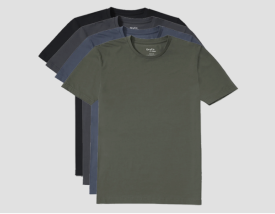Hyperhidrosis affects each individual differently and that means every sufferer will have to treat it differently as well. It often takes trial and error to find the right treatment or combination of treatments, which is an often time-consuming and frustrating process. Fortunately, there is a protocol - a treatment algorithm - that can help you choose the right treatments sooner. This post will explain how this protocol looks like.
Three Levels of Treatment
Here’s the basic rule of thumb when seeking treatment: start off with the least aggressive treatments before trying more aggressive ones. The least aggressive treatments are the least invasive and carry the lowest risk of side effects.
That's not to imply that stronger treatments are painful, it just means that they require supervision and administration from a qualified medical professional. With that said, there are three levels of treatment when it comes to hyperhidrosis: medical treatment, cosmetic treatment, and surgical treatment.
Medical Treatment for Excess Sweating
The term “medical” in this context may be confusing, because you may say that all hyperhidrosis treatment is medical in nature. However, the term refers to treatments involving prescription drug interventions, whether they’re oral or topical.
Prescription treatments are typically the first line of solutions for hyperhidrosis sufferers. They're readily available as long as they are prescribed by a doctor and can easily be adjusted or tapered off as necessary.
Also, medicinal treatments for hyperhidrosis are effective for all four types of the condition - auxiliary, plantar, palmer, and craniofacial.
For many sufferers, the use of either an antiperspirant, an anticholinergic drug, or a combination of the two is enough to keep their sweating under control. For others, these treatments are not enough. When these prescriptions fail, a doctor will move them to the second level of treatment.
Cosmetic Treatments for Excess Sweating
Once again the use of the word "cosmetic" as a treatment term for hyperhidrosis might be a bit of a misnomer. But it simply refers to more invasive topical treatments often used for beauty and anti-aging procedures.
These procedures sometimes are recommended as the first line of attack against hyperhidrosis, depending on the severity of one's case. Nevertheless, they require medical supervision although their side effects are typically mild.
Cosmetic treatments for hyperhidrosis can produce a nearly immediate or rapid improvement in hyperhidrosis symptoms.
Cosmetic treatments such as botox and iontophoresis require medical professionals for them to be administered. With that said, they are safe when administered in clinical settings and can resolve some of the toughest cases of hyperhidrosis.
Surgical
For the most severe cases of hyperhidrosis, surgery may be their best option. It is the third line of treatment. Of course, surgical treatments carry a higher risk than non-surgical ones. Nevertheless, the success rate of surgical procedures for hyperhidrosis is high and the recovery time is generally fast.
Again, hyperhidrosis surgery is best reserved for the most severe cases. That includes cases that have not been resolved by milder treatments, or cases so severe that it would just makes logical sense to go under the knife.
Where Sweat-Resistant Fabrics Come Into Play
So far we've focused on medical interventions to treat hyperhidrosis. But there are practical solutions which you can rely on as well that don’t require a doc’s prescription or visit. Dietary changes can help, as well as eliminating certain triggers alcohol, caffeine, or nicotine that induce excessive sweating.
One of the most practical hyperhidrosis hacks is to wear sweat-resistant fabrics. Apparel for excessive sweating contains moisture-wicking materials that will keep you dry and comfortable. And the benefit of sweat-resistant fabrics is that they come with no side effects and they are completely non-invasive.
They may not replace any of the three types of treatments listed above but they can certainly give you an immediate sense of relief. A sweatproof shirt can also reduce the appearance of sweat stains. This will do wonders for your confidence and self-esteem especially in professional and social settings.
The only caveat is that sweatproof shirt is that will only address axillary hyperhidrosis, not the other three variants.
Tackling Hyperhidrosis From the Ground Up
Hyperhidrosis is an uncomfortable condition that can leave you feeling lost, frustrated, and hopeless. But there are many treatment options available and it's just a matter of finding the right ones to help you manage your symptoms.
The treatment protocol mentioned above can serve as your starting point. Begin with simple medicinal treatments and work your way up if needed. Also be sure to bolster the effectiveness of your treatment by tackling your diet, stress levels, and provide yourself with a practical solution such as sweat-resistant fabrics.
Now there may still be occasions where you can’t control your sweating as you would like and may need specific hacks to compensate. We will tackle some of these hacks in a post about hyperhidrosis hacks you can use at the job.








